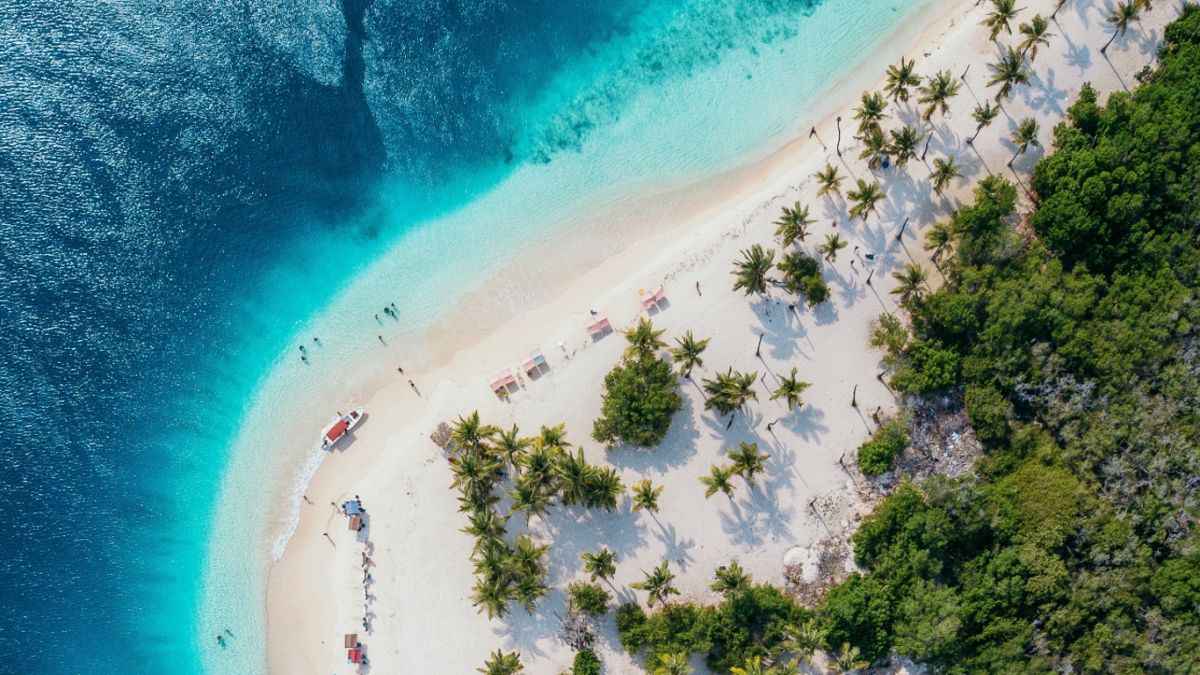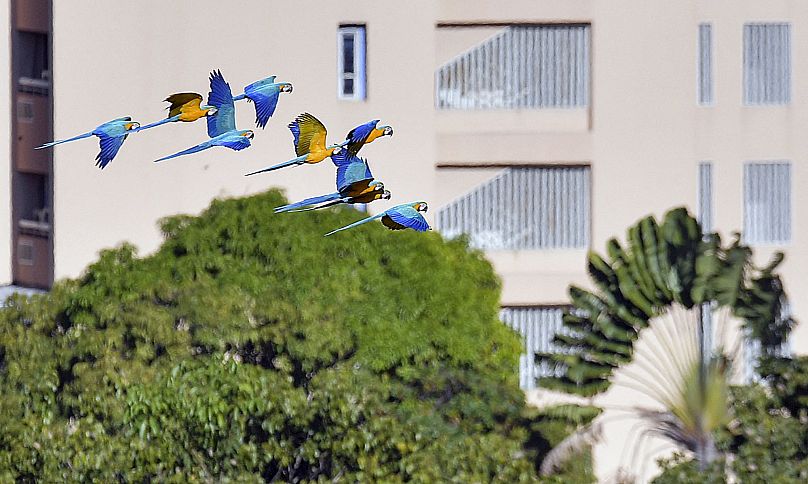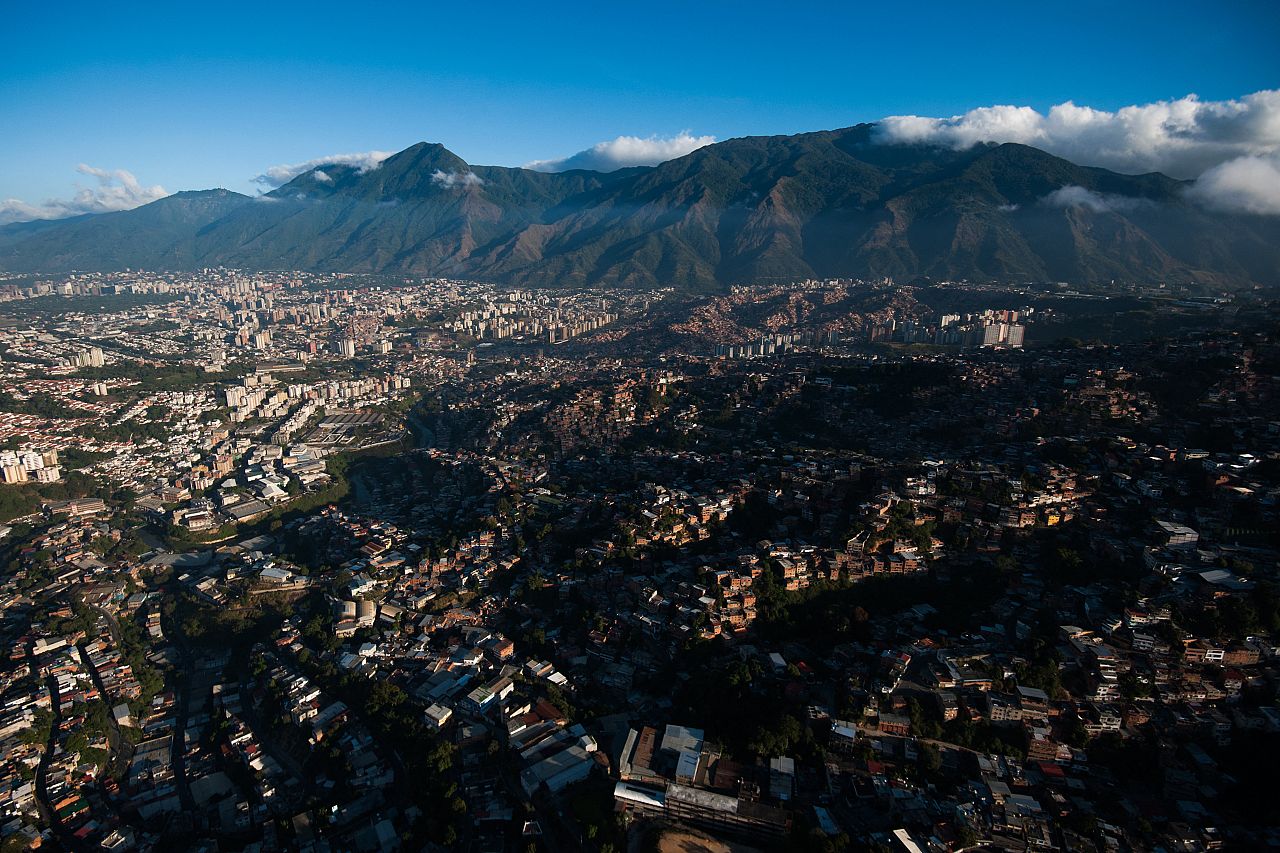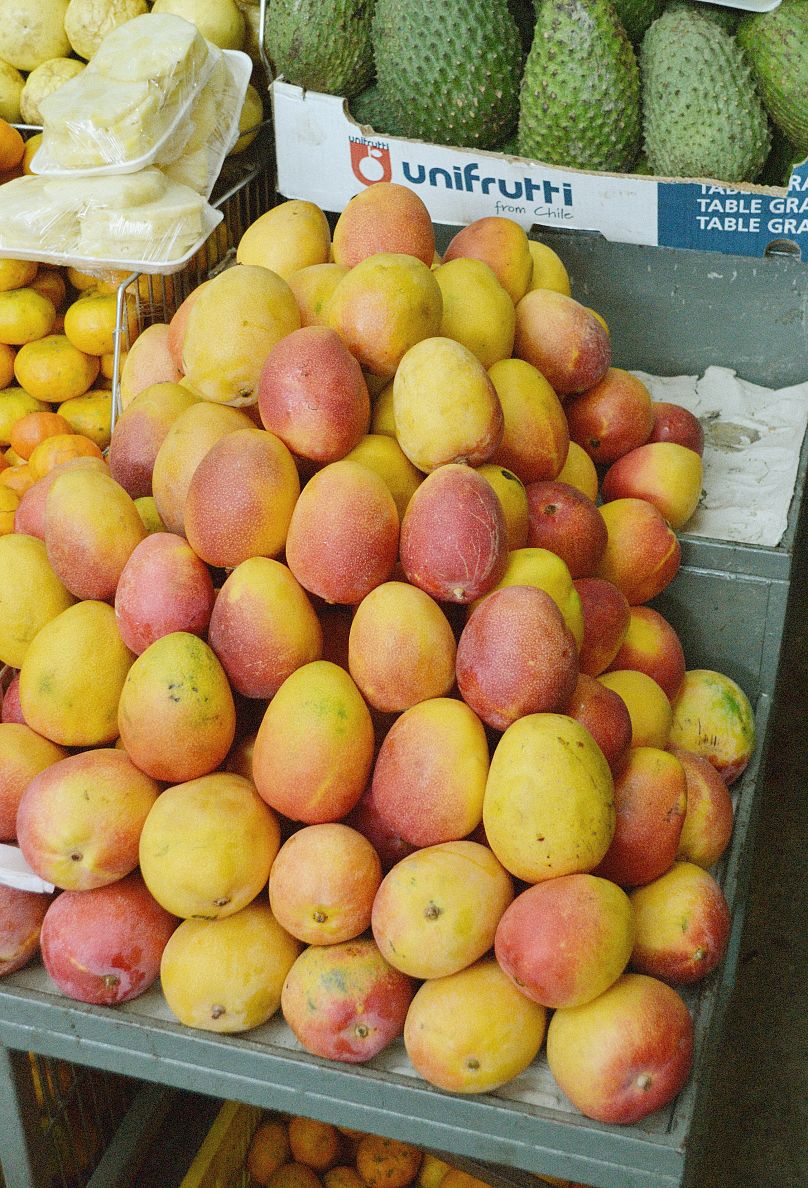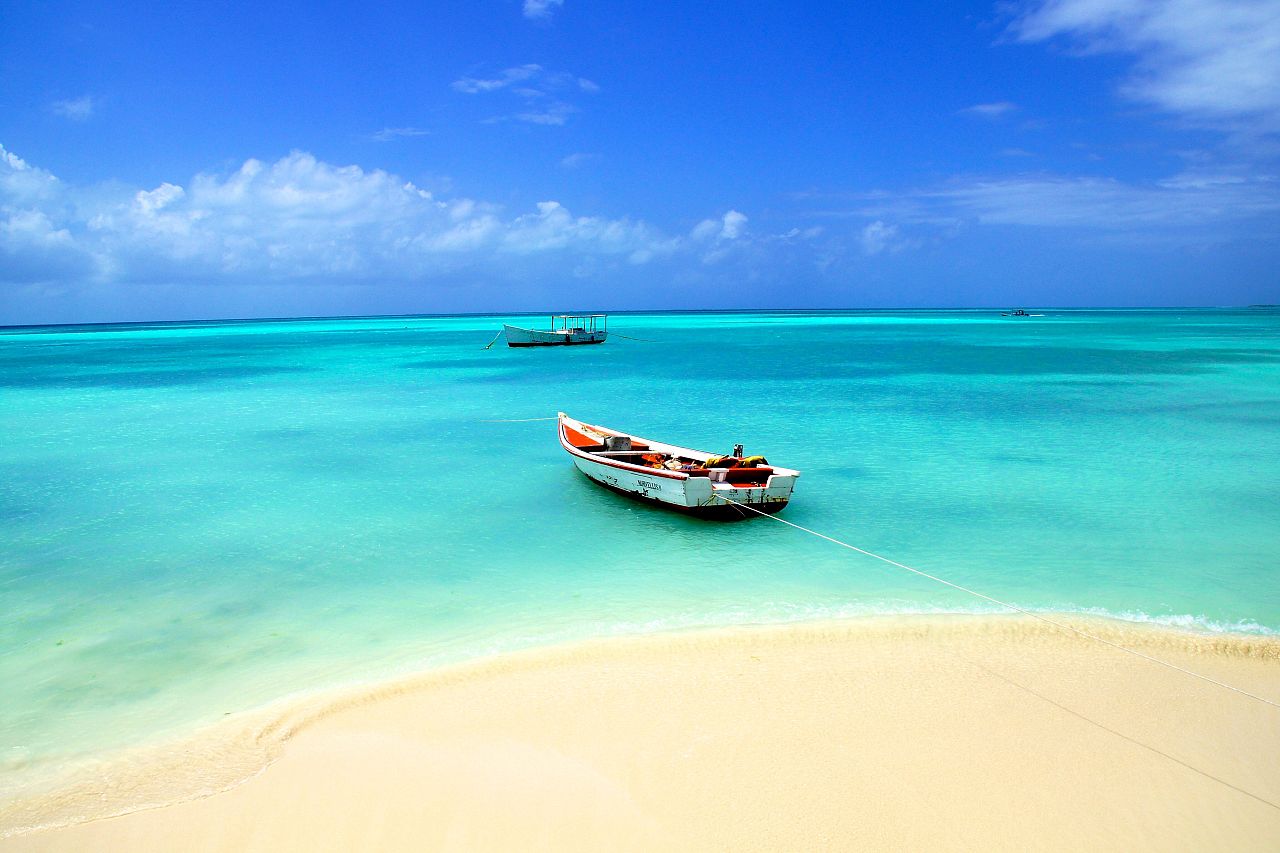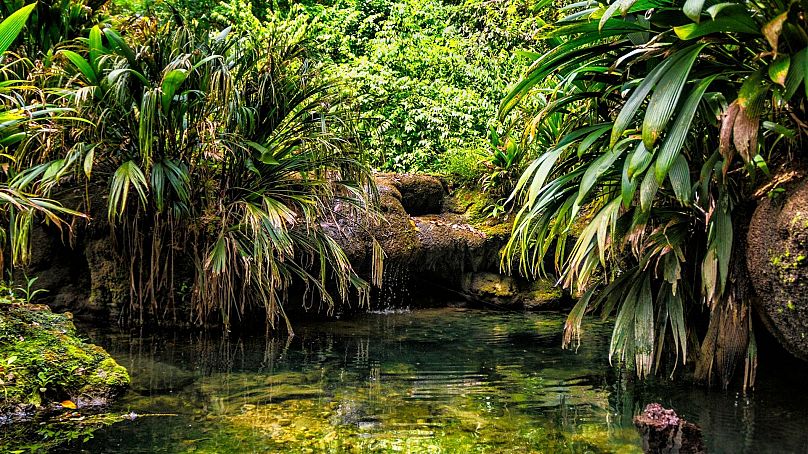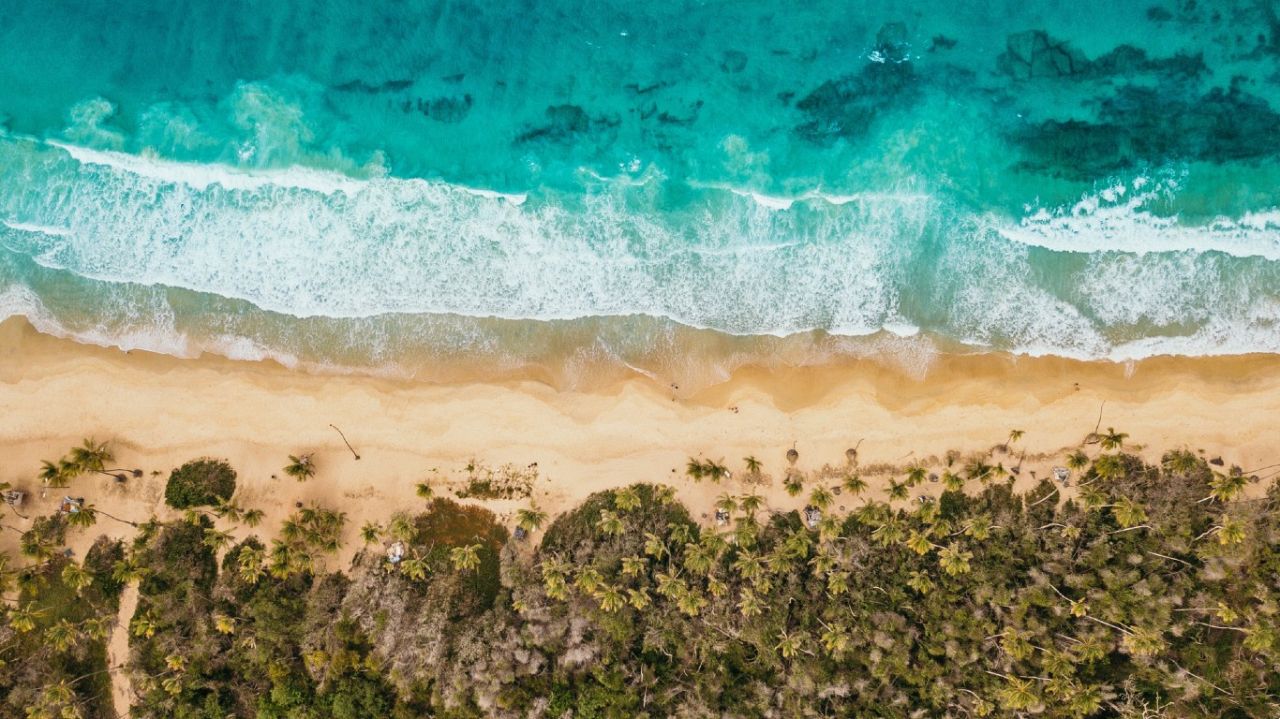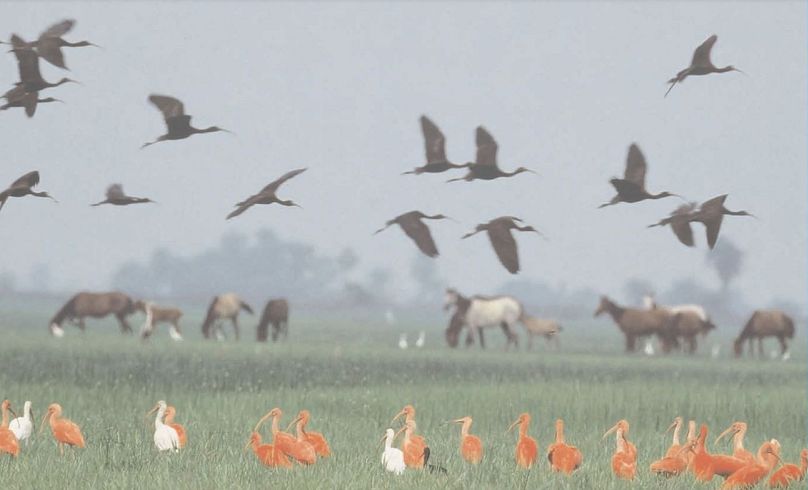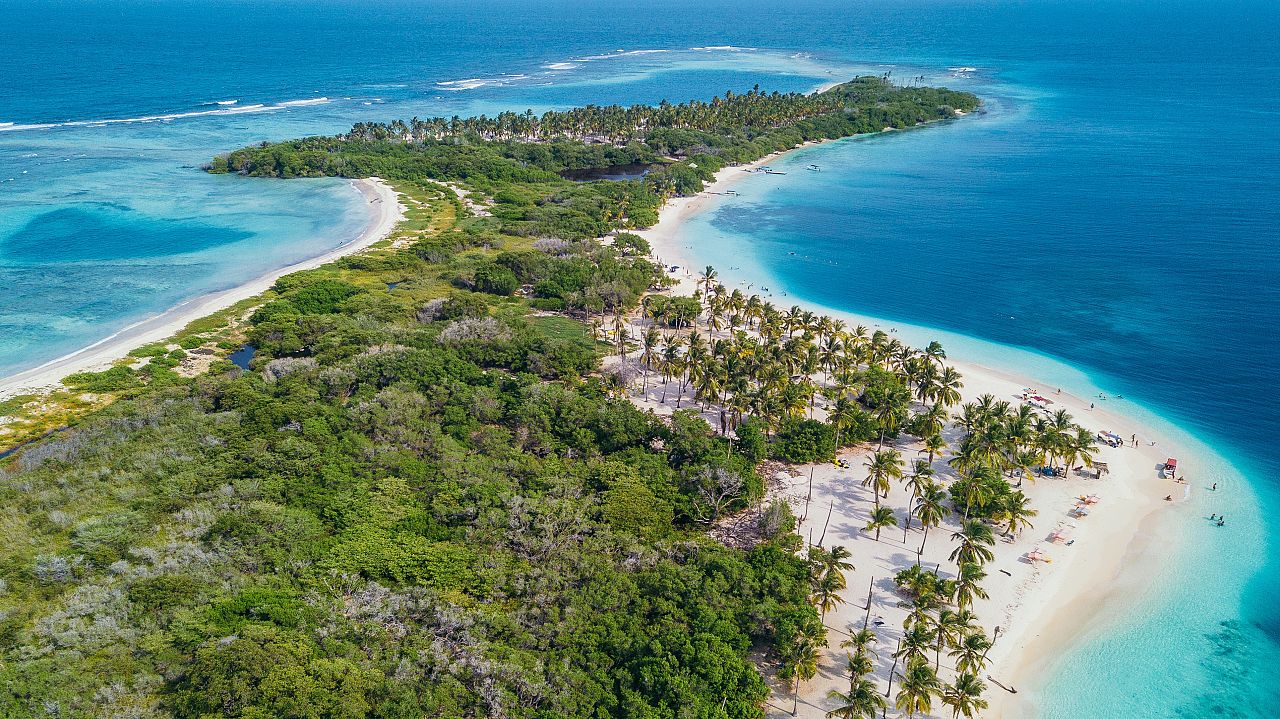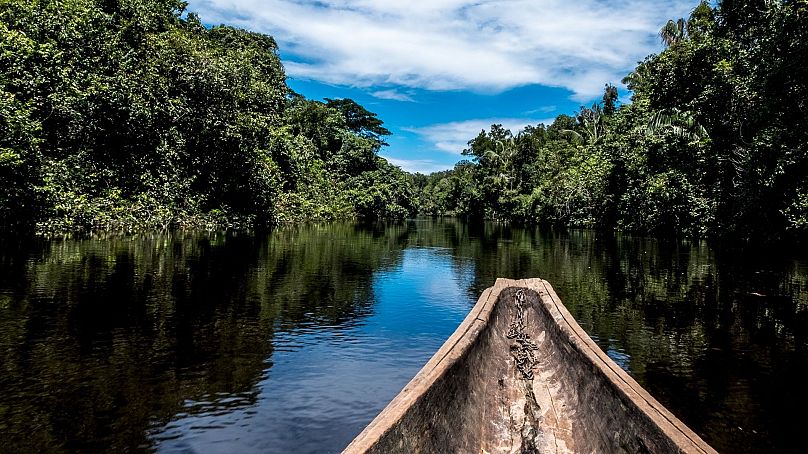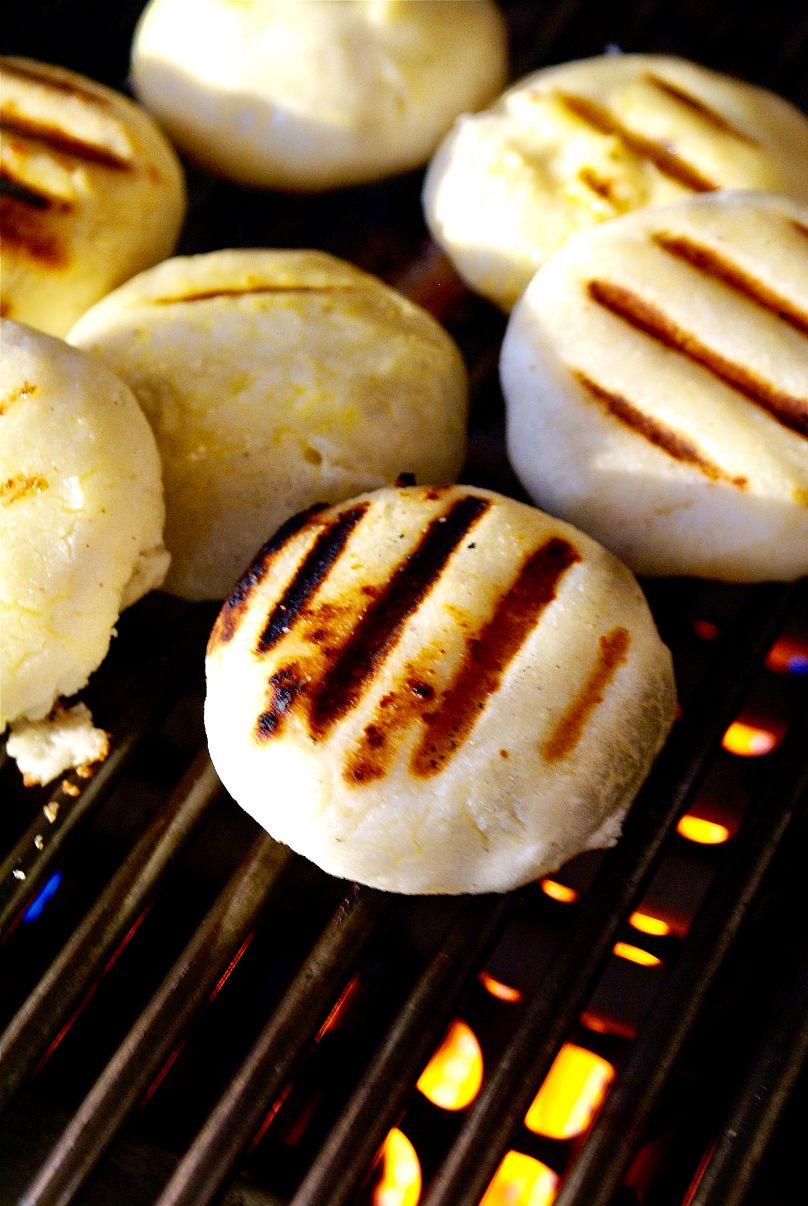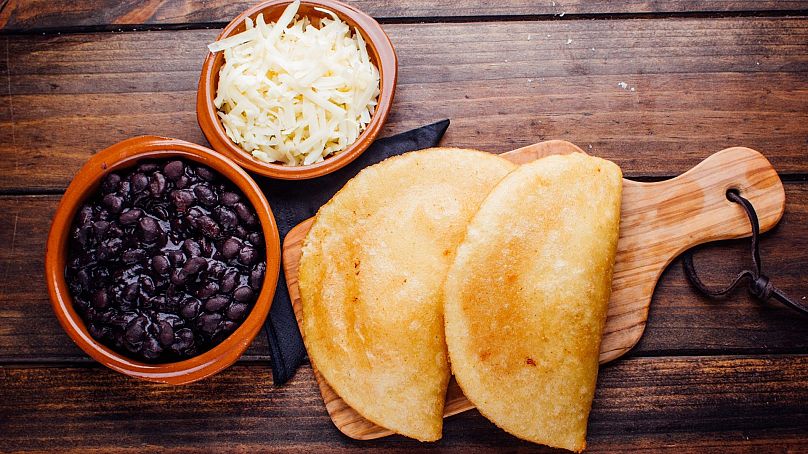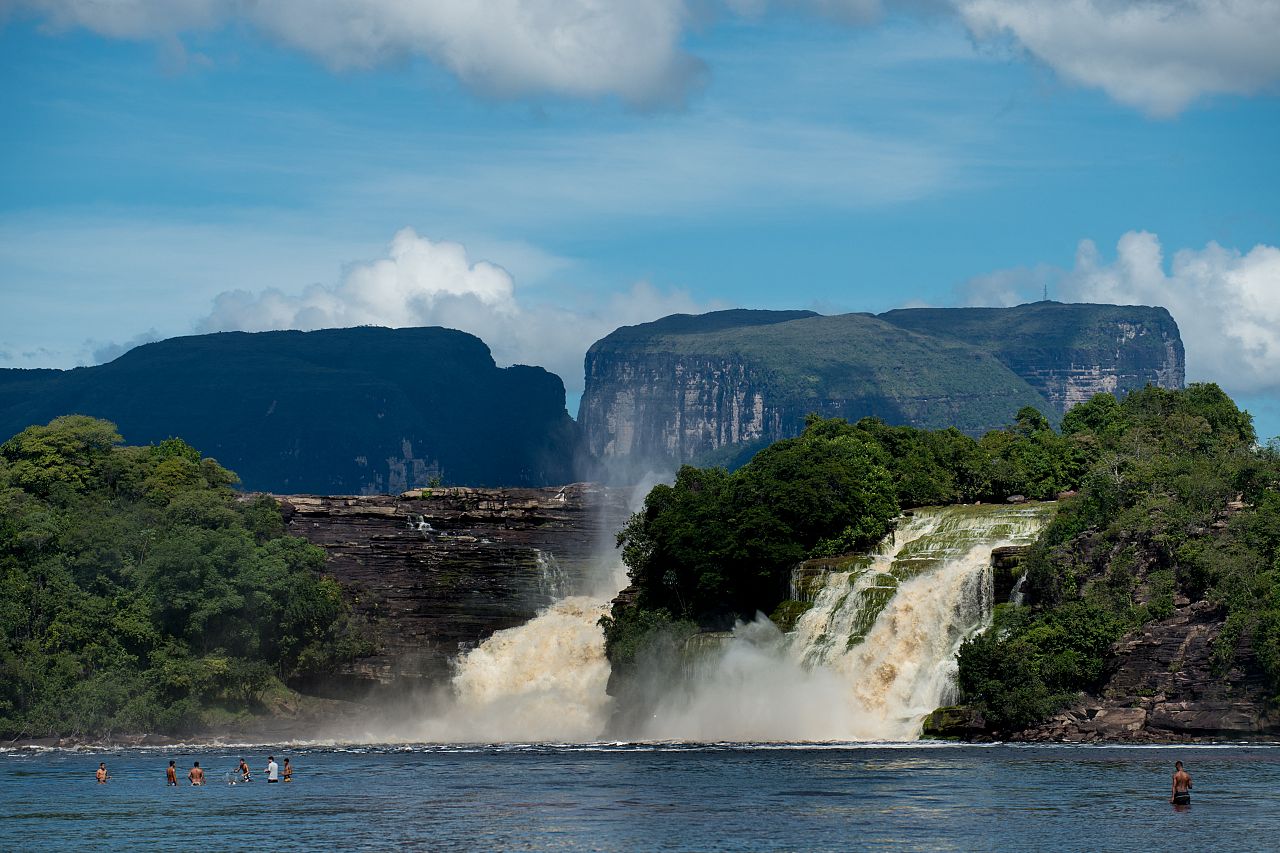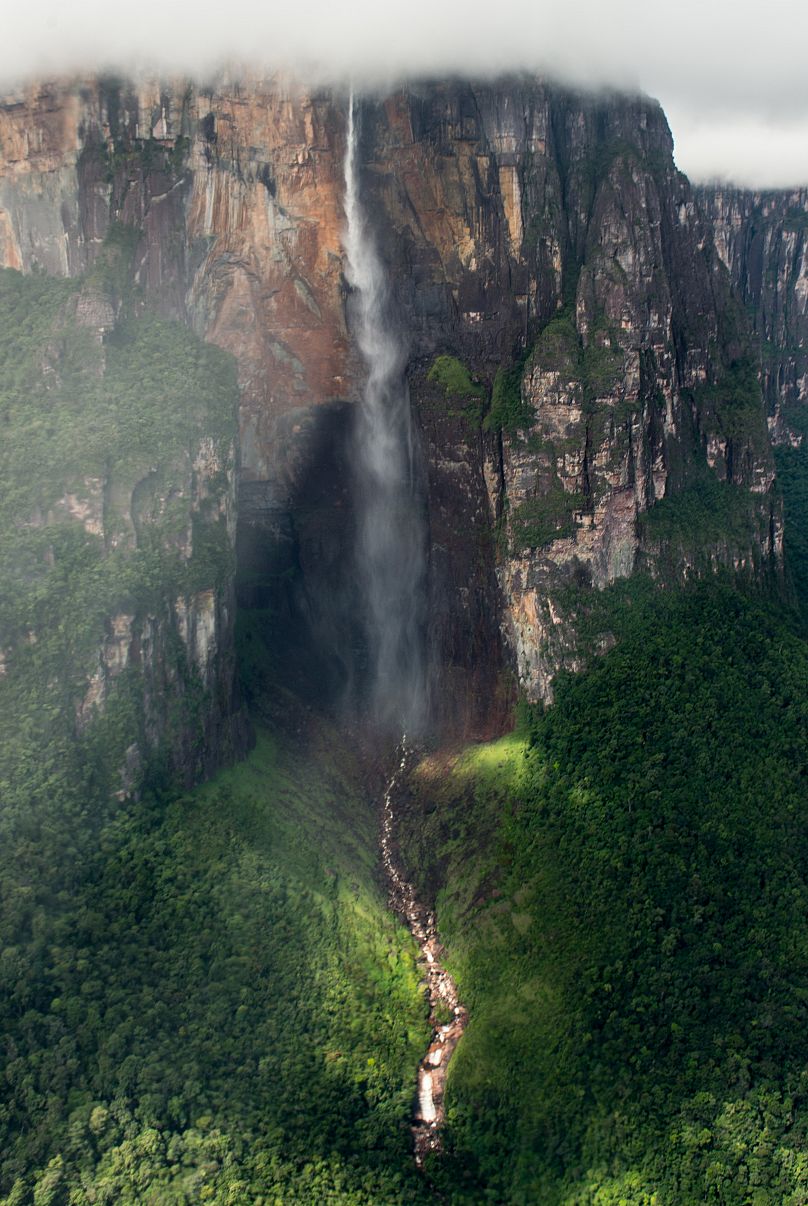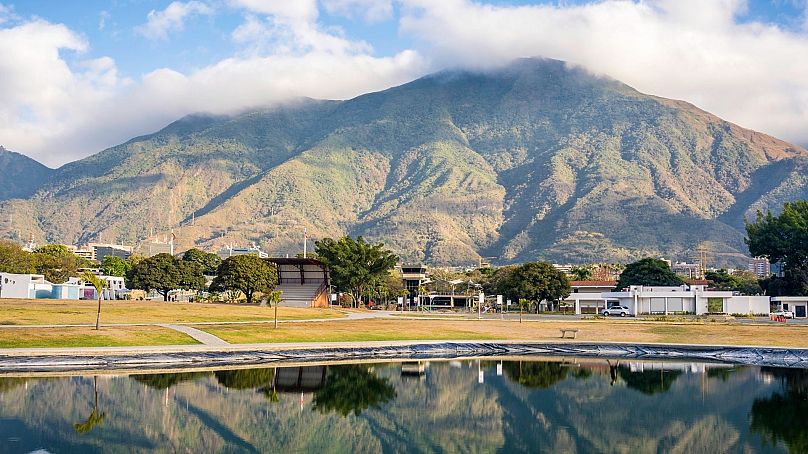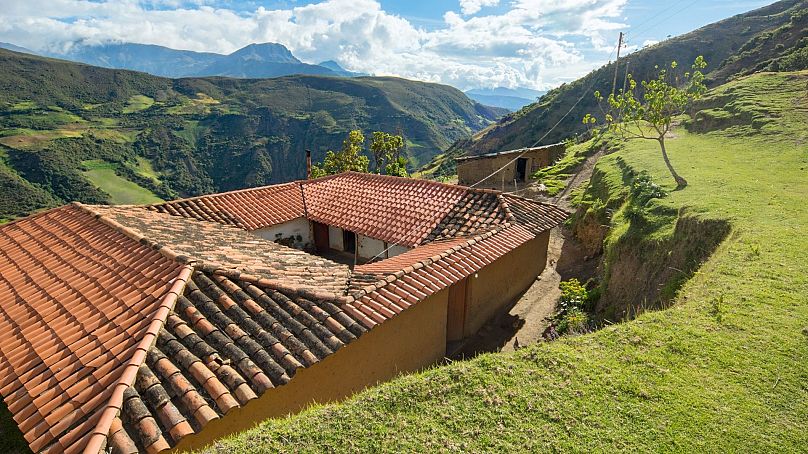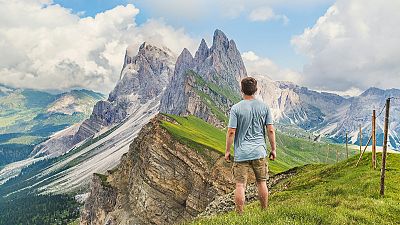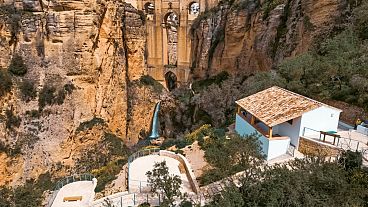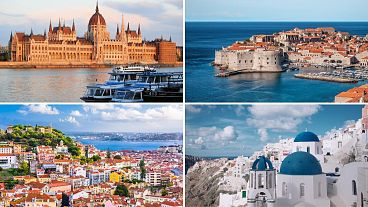Welcome to Venezuela, one of the wildest, most beautiful places on earth. Here's what to do and where to go when you're there.
Welcome to Venezuela, one of the most beautiful places on earth.
Picture this. You are about to land in Maiquetia, the country’s main international airport. From your window, you see the Caribbean sea and a massive rainforest mountain, we call it “el Avila,” separating the capital, Caracas, from the sea.
After an awkward immigration passage where the agent suggests there was a non-existent problem, you manage to pass through. You are outside the airport doors, it is warm, the sky is remarkably blue, traffic is noisy, and you can smell the sea. People smile at you. You’re in La Guaira, Venezuela’s main port, 25 minutes away from Caracas. You never expected to enjoy mere weather so much.
My name is Camille, I am your Venezuelan tour guide.
I was born in Caracas in 1994 and grew up between the country and the city. I love culture, music and food, but nature the most. Today I live in France and I am a journalist for Euronews. You’re in for a memorable voyage.
Why should you go to Venezuela?
Glad you asked. Summer reigns year-round in Venezuela - pristine beaches, virgin rainforests, and the world’s highest waterfall wait to be discovered. Delicious tropical fruit juice accompanies every meal.
People are cheery and kind-hearted. Colourful macaw birds are the capital’s collective pet.
People who thrive in big cities will love Caracas, and those who fantasise about Latin America will find the colours and flavours they are looking for here.
We have a rich architectural heritage and are recognised for our vast array of ecosystems. Travellers will be dazzled by the country’s mega-diverse natural landscape.
Our cuisine is also widely celebrated. Our gastronomical identity comes from the Indigenous culture in Venezuela, but it is greatly influenced by European migration during the times of colonisation and after the European wars.
The country is breathtaking and there is so much to discover. So let’s continue...
The best way to travel around Venezuela
Because of the political and economic context of Venezuela, crime is rife and it can hit anyone: poor and rich, foreigners and locals. However, because of the economic crisis, it’s those with money who are the biggest target.
Sadly, travellers are usually filed under this category.
But it is a shame to see Venezuela’s splendour go to waste. So the best (and only) way I would advise discovering the country is to do it with a local and a car.
If you don’t know anyone, it is fundamental that you contact a travel agency to guide your trip and ensure your security at all times.
What are the travel restrictions for Venezuela?
All travellers entering Venezuela must have a negative COVID-19 PCR test performed within 48 hours of boarding their incoming flight. An additional PCR test will be done at the port of entry – this PCR test costs $60 (€53), and must be paid cash. If you test positive for COVID-19, you will be required to quarantine.
The public health service in Venezuela is seriously damaged and should not be trusted, unfortunately. It is imperative to travel with international travel insurance - especially now, in the time of a pandemic.
When should you visit Venezuela?
We are blessed with a climate that has little variation across the year and it's characterised by two periods - a dry one, from November to April, and a rainy one, from May to October.
However it is warm year-round, and beach days are possible from January till December. Free mangoes fall from the sky from April to September.
Top 10 must-see places in Venezuela
10. Blue was born from the Caracas sky
Caracas es Caracas, y lo demás es monte y culebras, “Caracas is Caracas, and the rest is bush and snakes,” the Caracas saying goes. The phrase is, of course, the result of pure capitalist snobbery, but Caracas does have a 'je ne sais quoi' about it.
Venezuela’s cosmopolitan and congested capital is an exciting place to be. There is a fine restaurant and street-food scene, beautiful architecture - especially Art Deco and Bauhaus, and nature all around.
Caracas museums were all famed across the continent in the '80s for their avant-garde collections. Today they are in a shameful state, a result of bad state management. However, resourceful, private institutions have survived showcasing contemporary art, such as la Sala Mendoza in the Universidad Metropolitana, the Centro de Arte Los Galpones and Hacienda la Trinidad.
The Avila mountain, and La Guaira (the beach, only 25 minutes away), should be explored too. Make sure to allow at least four days in Venezuela’s great metropolis.
9. Margarita, the biggest island in Venezuela
Margarita is a popular place among holidaymakers. The Caribbean island has a special conjunction of mountains and sea and has developed a hotel infrastructure around a variety of beaches.
My favourite beaches in Margarita are playa Parguito and playa El Agua. Playa El Yaque is also nice, famous for its perfect year-round conditions for kitesurfing and windsurfing.
At the beach, you should eat pescado frito with tostones (fried fish and plantains chips), cheap and delicate oysters (all while crossing your fingers to get a pearl), and empanadas de cazón (shark empanadas), but we’ll touch down on the food later).
8. Los Roques
Los Roques National Park is everything you could dream about a paradisiac Caribbean destination, and perhaps my favourite place in Venezuela.
The archipelago has more than 300 islands with white-sand beaches, all with marbled turquoise waters.
The island remains virtually untouched, virgin and wild because it is only accessible by private boats or small planes. The visit will be pricey, but it’s worth it.
7. Henri Pittier National Park: Cepe, Choroní y La Cienega de Ocumare
The Henri Pittier National Park is the largest national park on the Venezuelan coast. The rainforest park is fairytale-like with more than 500 bird species and tropical coastal scenery.
To get to the coast side of the park (what we’re here for), you must drive through a tropical rainforest, by means of a narrow road that was built in the 20s. The road itself, which crosses many water streams and waterfalls, is worth the trip.
After at least an hour and a half under the shade of huge 60-metre tall trees, you will start reaching the different bays: Ocumare de la Costa, Cata, Cuyagua, Choroni, Chuao, Cepe.
Each bay has an independent river basin, each bay is a different village. All of them together form a spectacular trifecta of mountain, river and sea.
The villages of the coast are inhabited by descendants of the African migration in Venezuela from colonial times. They have a rich and important musical tradition linked to the rhythms of Africa - the drum festivals are emblematic.
The villages also cultivate the land where some of the best cacao in the world is grown, especially in the village of Chuao.
6. Península de Paria, the "Land of Grace"
"Land of Grace," said Christopher Columbus as he stood foot at the Peninsula de Paria back in 1498. He was depicting the divine beauty of the landscape.
The península is indeed a site of exceptional beauty: palm-covered hills slope down to the sea and create a range of long bay beaches of yellow sand, backed by groves of coconut palms. Here small farms also produce some of the best cocoa in the world.
The península de Paria is great for swimming, hiking with a view, eating fresh grilled fish and drinking agua de coco (coconut water).
You will be marvelled by unique tropical flora and fauna, notably its numerous species of birds.
5. El Llano venezolano
The territory of el Llano (the plains) descends from the eastern Andes in the Colombia-Venezuela border region and covers much of central and southwestern Venezuela.
The region is considered one of the most important wetland and freshwater ecosystems on the planet. Great extensions of plains populated by forests, savannahs, dunes dominate the landscape and offer rare vegetation and fauna, of unique and breathtaking beauty.
Los Llanos have many rivers, lagoons, and even freshwater beaches, which come in handy since it is notably hot.
The local population - the llaneros - is very hospitable. They are the original Venezuelan cowboys.
4. Morrocoy National Park
Morrocoy National Park is a protected island and marine preserve on the Caribbean coast of Venezuela.
The beaches here are, once again, spectacular, and known for their clear waters, mangroves, and virgin coral reefs.
To enjoy Morrocoy, you must go to the quays (islands) by either a private boat or a "peñero," a fishermen's boat that can be shared with other passengers. On your way out, make sure to catch a cocada (coconut smoothie) at one of the kiosks on the main road.
3. Merida
The state of Merida, due to the beauty of its Andean landscapes and its pleasant climate, is one of the main tourist centres in Venezuela. This is where the eastern Andes mountain range of South America begins.
The best way to go to Merida is by car, the road through the paramos merideños is beautiful, and there are plenty of good hotels and typical restaurants.
2. The Guiana Massif: Mount Roraima
The Guiana Massif is located south of the Orinoco River, covering the states of Bolivar and Amazonas.
It is one of the oldest continental blocks on planet Earth, so the oldest rocks of Venezuela are found here.
Mount Roraima is a tepuy, a mountain famous for its table-top shape. The summit is completely horizontal and occupies an area of more than 30 square kilometres, surrounded by waterfalls and cliffs.
Some people call it 'an island in the heights'. An expedition to Mount Roraima will last about a week, and it is enough of a reason to travel to Venezuela on its own.
“Those flat-top mountains are one of the most beautiful and mystical places I’ve ever been in my lifetime,” - that’s what a French guy I met at the supermarket told me the other day.
1. The Amazon
Another exciting yet surprisingly less popular tourist destination in Venezuela is the Amazon.
Several companies offer different experiences and excursions. Hikers will enjoy exploring the Autana tepuy and its surroundings.
Expeditions to other indigenous villages are less demanding, as well as a boat trip, or rafting in the Orinoco River.
What should you eat in Venezuela?
Our food staples include corn, rice, plantain, cassava, beans and several types of meat.
Ají dulce (a sweet chilli) and papelón (unrefined whole cane sugar) are found in most traditional recipes - our cooking is all sweet, salty and spicy.
Start with Arepas. Arepas are a symbol of Venezuelan gastronomy and one of the most common pre-Hispanic foods still popular in the country. Arepas are a kind of round, flat corn cake, and the fillings are varied: typically cheese, ham, eggs, shredded beef, avocado, among others.
The best place to eat arepas is at an Arepera, a traditional restaurant specialising in making arepas. They are everywhere.
Cachapa is an incredibly delicious, sweet maize pancake usually filled with fresh cheese and/or fried pork. You can eat cachapas in most areperas too.
Empanadas -Venezuelan empanadas- are similar to arepas but fried instead of grilled. The dough is made with cornflour, and the fillings, typically cheese and shredded beef, are sealed inside.
Tostones are twice-fried plantain slices, and a common side dish for fried fish, typically eaten at the beach.
Cocada, oh the sweet Venezuelan cocada. A simple sip offers a sensory journey to the paradisiacal beaches of the Caribbean. The original cocada is made by mixing fresh coconut pulp, coconut water, milk, ice, sugar and cinnamon. This mixture is made in a blender until a slushy texture is obtained, like a smoothie.
Chicha criolla is a sweet, non-alcoholic Venezuelan drink made from rice, milk, condensed milk and cinnamon. It is thick and heavy but delicious and must be drunk very cold.
Let’s call it a Venezuelan original milkshake.
Cachitos are similar to French croissants filled with ham, these are the go-to breakfast in any Venezuelan boulangerie.
Casabe is a flatbread made of bitter cassava, perfect to snack on its own or to substitute bread.
Tequeños are an elevated version of your regular cheese sticks. They are very popular, and you can get them everywhere.
Pabellón criollo is the national dish: made with white rice, shredded beef, tajadas (fried ripe plantain) and stewed black beans.
Cacao - Venezuela is the home of legendary cocoa beans. All top chocolatiers around the globe offer a 'Chuao' blend, which is argued to be some of the best cocoa across the world.
These are the major experiences you shouldn’t miss
Everything I said above, plus:
Salto Angel and the Canaima Lagoon
Don’t hesitate a second for a 3-day expedition to Angel Falls, the largest waterfall in the world in the heart of the Venezuelan jungle.
The trip starts from the Laguna de Canaima in an Indigenous handmade boat.
Canaima is declared a World Heritage Site and is hence one of the most popular and well-known sites in La Gran Sabana.
Beautiful waterfalls, multicoloured beaches and tepuis await.
Take a road trip to Henri Pittier National park and explore the coastal villages and their traditions.
My favourite is Choroní. Once there, it’s a good idea to drive to Chuao and Cepe. Or sail to la Cienega if you have the time, locals offer the service.
Choroni has the best infrastructure to receive tourists in the area and charming B&Bs will be thrilled to receive you.
Visit the small-scale Paria chocolate factory, and nibble on samples from one of the best chocolate makers in Venezuela.
Go Scuba diving in Los Roques
The archipelago is one of the most diverse and best-preserved coral reefs in the Caribbean, which makes it a spectacular scuba diving destination.
Take a peñero, a commercial boat, to Cayo Sombrero in Morrocoy and spend the day swimming and eating cheap oysters.
Go up to Pico Bolívar in Merida´s Cable Car
It is the highest and second longest cable car in the world reaching an altitude of 4,765 million square metres.
In el paramo, take a day hike to Laguna de Mucubají and try el Pizco Andino, a traditional soup similar to Chupe, and the Arepa andina, a variation on the Venezuelan classic.
What can I do for free?
Hiking the Avila
Hike your way up the mountain that defines the northern boundary of Caracas and that separates the city from the Caribbean sea.
There are many trails, which can last from a few hours to a couple of days.
Explore Caracas’ historic city centre
The Museum of Natural History (former Prefecture of Caracas), Houses 29 and 31 on Avenida Norte (currently the Casa de las Primeras Letras Simón Rodríguez) and the Nuevo Circo de Caracas are the best places to go.
These buildings portray the architectural eclecticism dominant in the capital during the first three decades of the twentieth century.
Tour the beaches around Venezuela’s coast.
Most of them are free! Close to the capital, I like playa Los Caracas, a little longer drive for a more private and wild setting.
Accommodation tips
Venezuela’s hotel and B&B (posadas) scene has hugely expanded and there are many options throughout the country. Caracas is an exception, where options are more limited and hotels should be favoured.
Valentina Quintero's travel guide is an excellent reference for this matter. It is very complete, and with information about each region and State.
Travel agencies to help you on your adventures
ZOI Venezuela, a web platform founded by a dear group of friends. They offer unique tour packages and exciting outdoor experiences in many of the places mentioned above.
Akanan Travel & Adventure for expeditions in the Gran Sabana, Canaima, Angel Falls, Tepuis and the Amazons.
The Circuit of Excellence brings together a group of inns with a high-quality label. They are all excellent.
Daniel Moreno with EcoBike is a good friend and former professional cyclist that organises adventure tourism trips in the region of Merida. Notably mountain bike trails. Yovanny Gil, another family friend organises hiking, all-inclusive trips in the Andes region.
Orinoco Delta Lodge in the middle of the Venezuelan jungle is an eco-lodge located on the banks of the Orinoco river.
Bequeve is a chain of comfortable and beautiful posadas (B&B's) in Los Roques and Choroní. They also organise trips and excursions in both localities.
